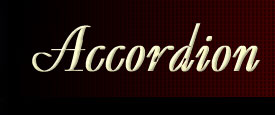

| Intro | Feedback | Russian | China |
 |
 |
|||||||||
|
||||||||||
|
|
Methodical Recommendations for Studying Kravtsovís KeyboardIf you are aware of new capabilities offered by the Kravtsovís accordion, you may want to play it. What are the effective ways of "tuning" the performerís skills into the new keyboard? While looking at the keyboard, the first thing that strike the eye is the regular pattern of white and black keys that does not, at the first sight, resemble the traditional piano keyboard very much. However, as you already know, this difference is only superficial. The new keyboard inherited all the features of the traditional keyboard. It becomes quite obvious as soon as you try playing it. That is why you can be sure that you will not have to learn completely new skills, but only "tune in" to this unique instrument with the skills you already have. The methods of teaching playing Kravtsovís accordion will stay unchanged. It is based on traditional principles of teaching beginners. At the same time, the more compact layout of the keyboard ensures a more organic connection between the instrument and the performerís hands (both the adultís and childís); therefore, a learner should develop playing skills faster than usual. When one starts learning to play on Kravtsovís keyboard, there are two basic directions to consider. The first one is mastering the necessary playing skills. The second direction is consolidating those skills and adapting them for the new conditions of playing. During the first stage the beginner has to:
It usually takes the beginner 2-4 weeks to study the materials listed above. First public performance of a piece of music (regardless of whether it is intended for the traditional or the improved keyboard) can be considered the beginning of the second stage of learning. Further studies bring the learner into the button accordion playersí realm of academic chamber performing. This is where the learner encounters a basic problem that has not been relevant before. He or she has to develop the true mentality of a performer who plays an instrument with a wide span of tones. The button accordion performers already have this skill, which is often flawless; it puts them one step higher; a piano accordion player still has to go up that ladder. Success will depend on how motivated and persistent the learner is. In N.A.Kravtsovís teaching experience there are dozens of practical examples when learners have successfully mastered these both directions. Most of the beginners played programs one hour long or even longer by the end of the first academic year. Besides, the new repertoire eliminated their "piano accordionistsí inferiority complex" and enabled them to perform publicly in concerts and contests on equal terms with the button accordion players. . |
||||||||||||||||||